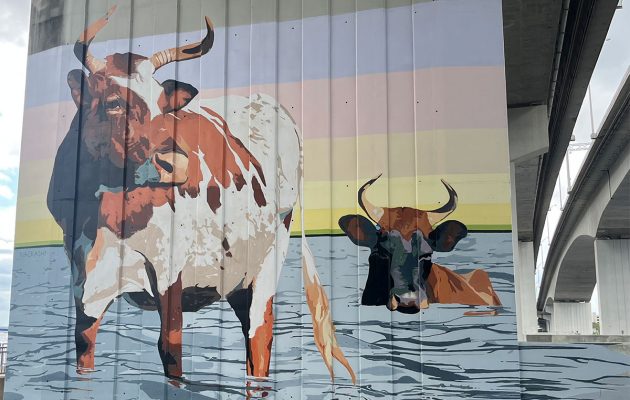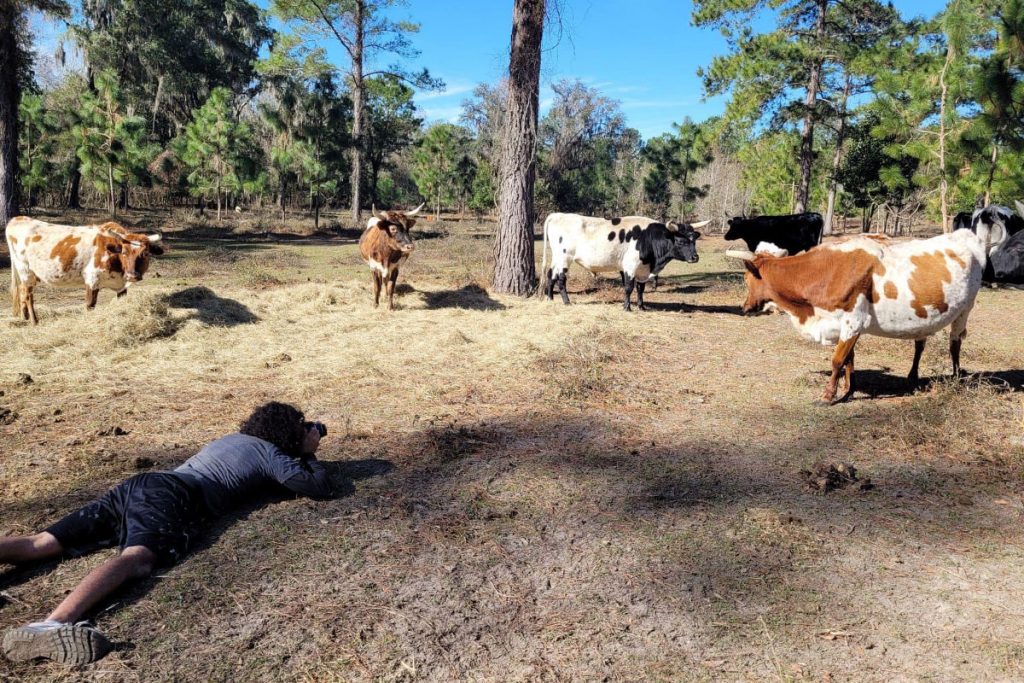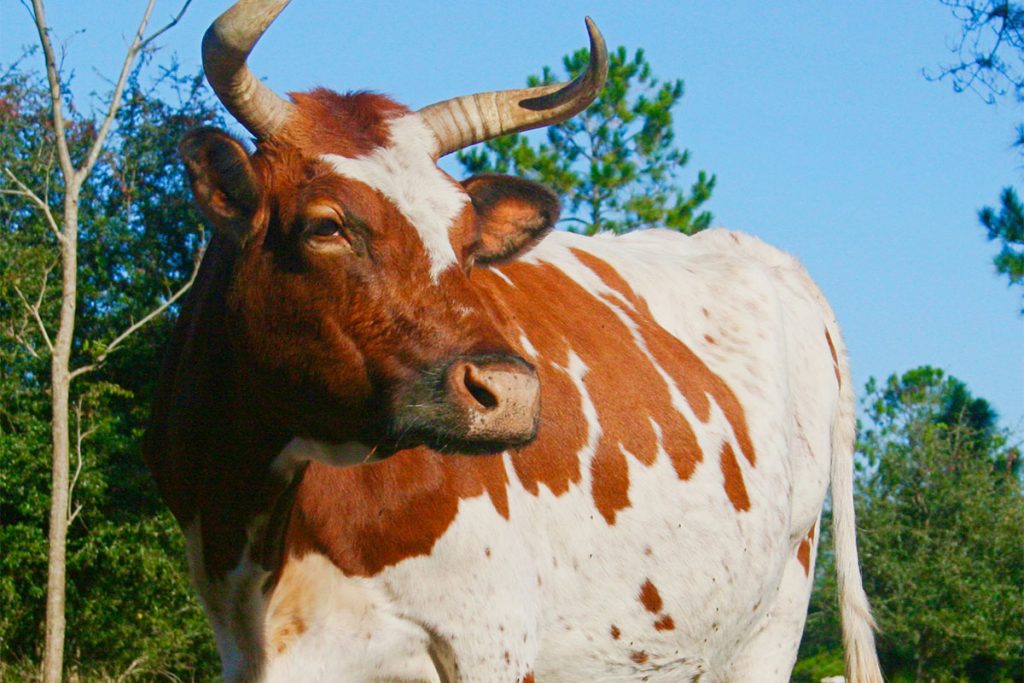Artist honors Jacksonville history, completes Cowford murals

The Cowford murals may have had their origin as a solution for covering graffiti, but with the creative genius of local artist David Nackashi, they have become a visual history lesson. This fall Nackashi completed the last of the murals beneath the Acosta Bridge that he started in 2021. The large murals, 40 feet wide and about 32 feet high, portray four Florida Cracker cows.
The models for the murals – Eunice, Esther, Prudence and Harmony – are descendants of the breed that Spanish conquistadors brought to Florida from Malaga, Spain, centuries ago. They live on a farm owned by Lisa Harmon in Live Oak. Harmon keeps the breed for historical purposes.
“Jim Draper, a former professor of mine from the UNF art department, did a series of Florida Cracker cow paintings that he displayed in Malaga,” Nackashi said. “When this project was presented to me, I knew the cows would be the perfect subject for the setting. He introduced me to Lisa, and I took hundreds of photos of these cows.”

Downtown Vision and Downtown Dwellers funded the project and handled the approval process for the art. The City of Jacksonville Parks, Recreation and Community Services Department of Transportation reviewed and approved the project, a process that took about three years.
The murals pay homage to Jacksonville’s history prior to its founding in 1822. Natives called the narrow St. Johns River crossing at today’s downtown Jacksonville, Wacca Pilatka, meaning “place of cow’s crossing,” according to the Jacksonville Historical Society. The area became known as Cow Ford, or Cowford, the place where it was possible for ranchers’ cows to ford, or cross, the river.
“I enjoy the challenge of making a mural meaningful to the area,” said Nackashi. He has noticed that, while the murals seem widely loved, people who don’t know the area’s history seem confused.

“I think that is perfectly fine, because then they can learn. I kind of hate being too obvious,” he said. “The Cowford murals are some of my favorite works that I’ve done and in one of my favorite parts of the city. Since the [bridge] columns were in the water, the cows, given our history, made the most sense.”
The murals face out toward the St. Johns River. They can be seen from the Main Street and Fuller Warren bridges and from across the street.
Nackashi painted the murals in two phases. The first phase was started late December 2021 and each column took about a week. The second phase began mid-September of this year and also took a week.
“There was a lot of waiting for scaffolding to be constructed and moved, but the actual painting took a week for each side of each column,” Nackashi said. “The location was a very peaceful place to work, and it was bittersweet to finish the project. I painted the murals with the best paint I know of and with the best UV clear coat I could find, so these murals should stay vibrant for a long time.”
By Karen Rieley
Resident Community News






